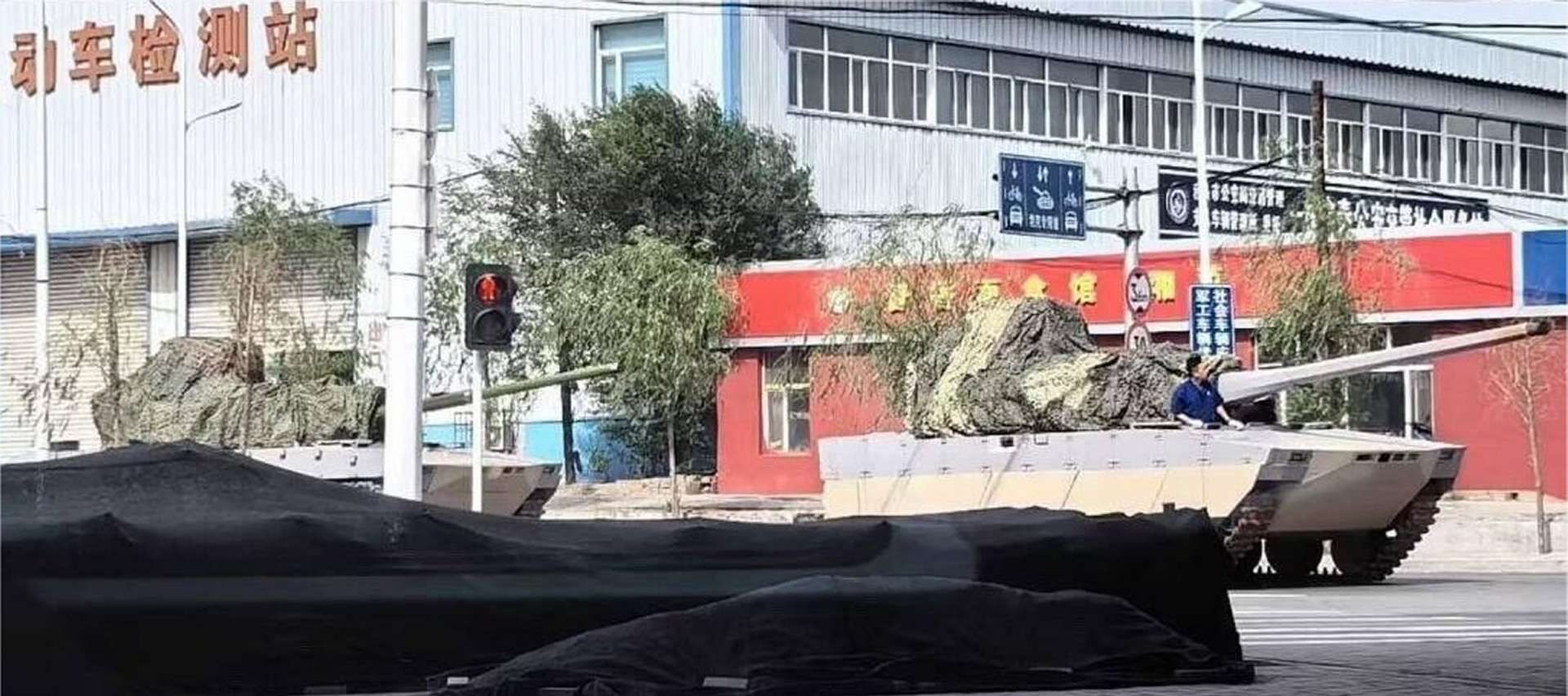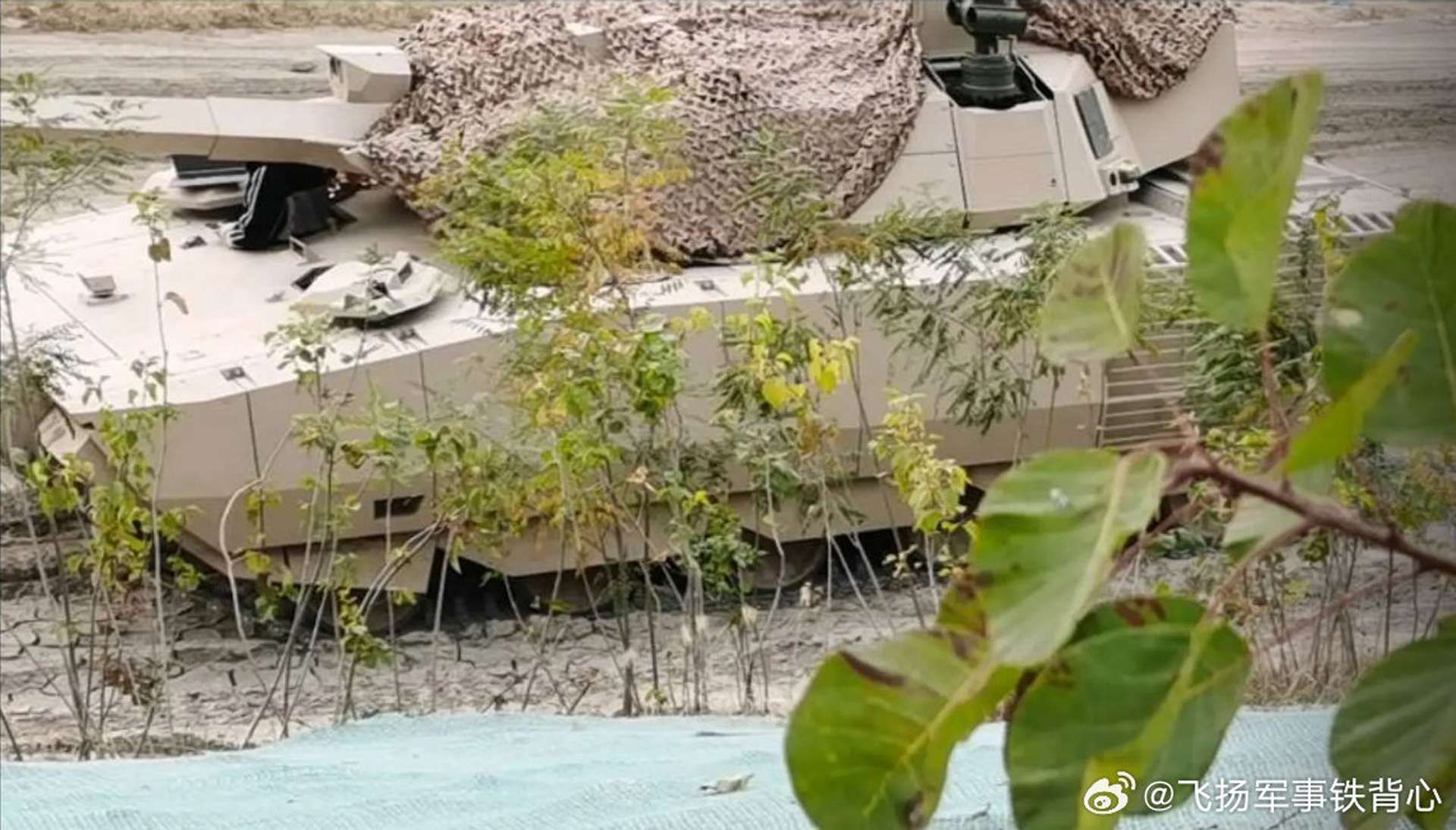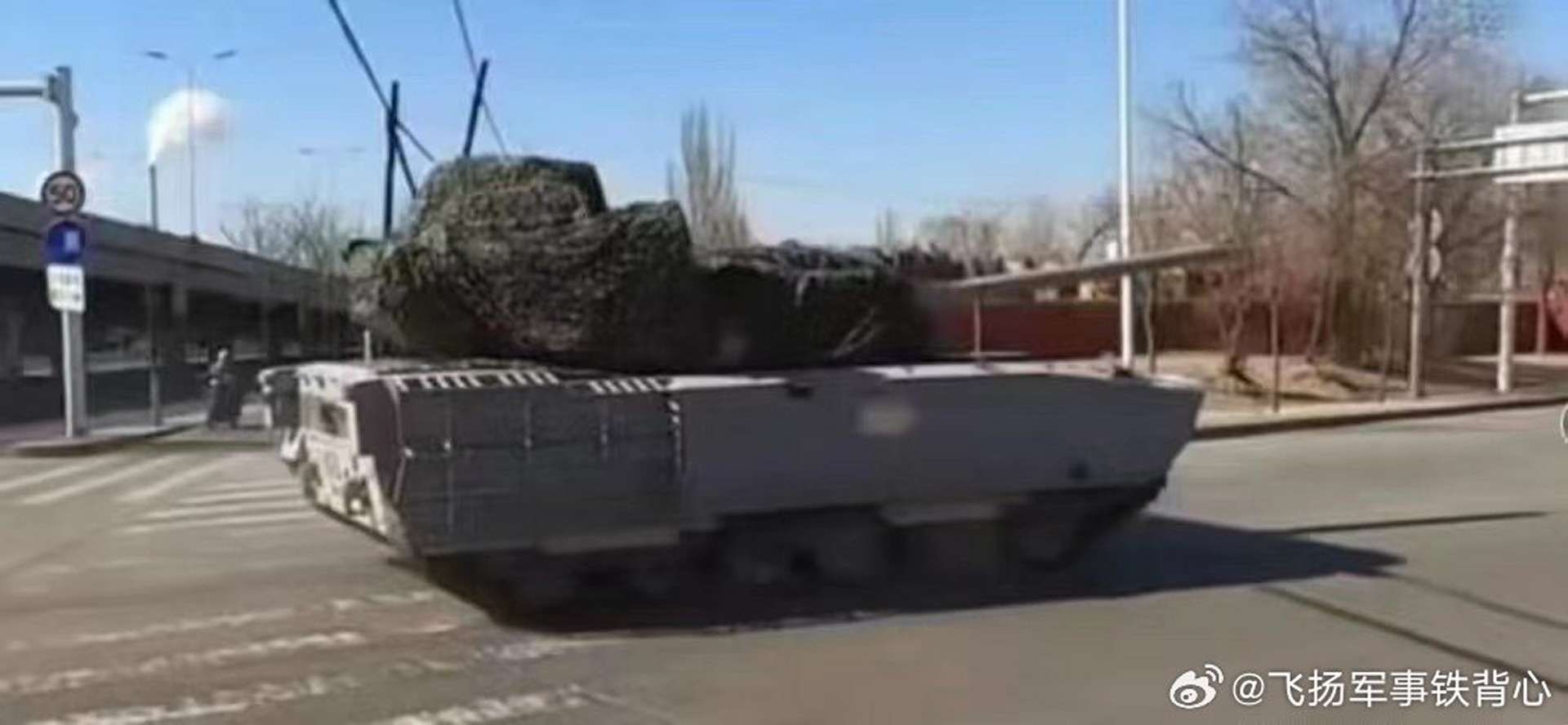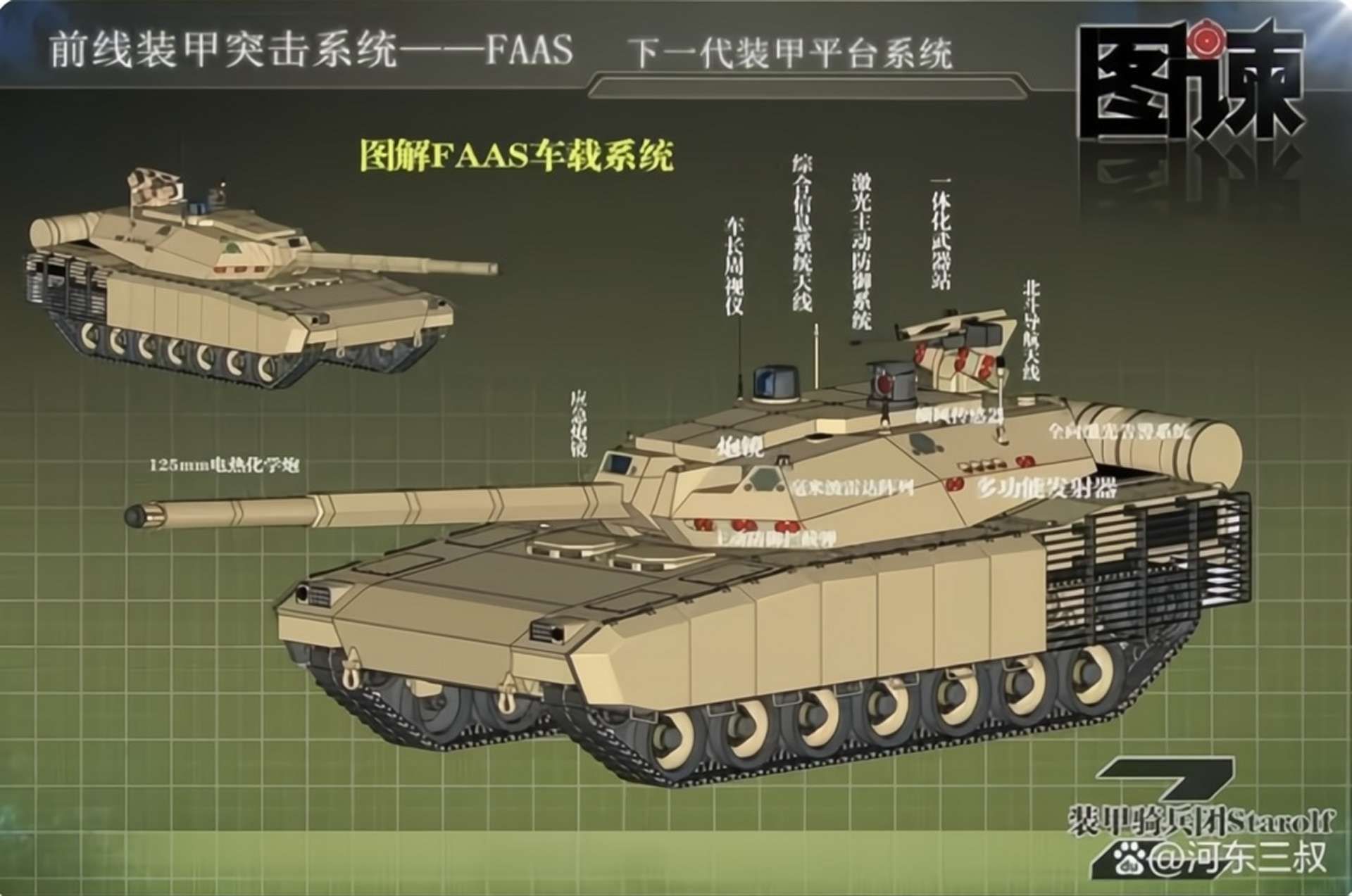Breaking news
Is China testing its future 40-ton 4th generation light tank with multiple weapon configurations?.
On May 22, 2024, reports emerged on Chinese social media about two variants of a new tank spotted in Baotou, China. The vehicles, photographed moving under their own power, sparked considerable interest and speculation among military analysts and enthusiasts. The tanks, covered with camouflage nets, were seen in an urban district, possibly heading towards a test site, which suggests that the motor part of their development is already quite advanced.
Follow Army Recognition on Google News at this link

The primary distinction between the two variants appears to be their armaments, with speculation pointing to different caliber guns, likely 105mm and 125mm. (Picture source: Chinese social media)
The new tank prototypes are believed to belong to the light tank class, as indicated by their narrow tracks and resemblance to components from the serial Type 15 tank (ZTQ-15), which weighs between 33 to 36 tons—comparable to the Soviet-era T-64 medium tank. The visual similarities to the test bench turret and renderings of an earlier tank project, with crew accommodations in the hull and an uninhabited turret, further hint at the prototypes' lineage.
These characteristics align with China's recent trend towards developing lighter alternatives to its main battle tanks, such as the ZTZ-99. Additionally, the test bench turret was also shown at the Baotou training ground, where Norinco, a leading defense manufacturer in China, recently tested a new heavy infantry fighting vehicle (HIFV) based on the Type 59 Main Battle Tank.
By cross-referencing various open-source intelligence (OSINT) sources, including Chinese ones, a clearer picture of these new light tanks emerges. The primary distinction between the two variants appears to be their armaments, with speculation pointing to different caliber guns, likely 105mm and 125mm. Both tanks are believed to be equipped with active protection systems (APS) that provide 360-degree coverage, including the top, and have thermal shrouds on their gun barrels to reduce heat signatures.
Additionally, the tanks are thought to feature an electric auxiliary power unit (APU) for silent assaults, phase-controlled array millimeter-wave radar, Light Detection and Ranging (Lidar) sensors, lighter armor and artillery, an autopilot system, and an AI-automated target determination system. They are also integrated into a comprehensive battlefield information management system.
Further images of the prototypes reveal a six-road-wheel configuration and narrow tracks, reinforcing the perception of a lighter tank compared to traditional main battle tanks. Modular overlays on the tanks may include dynamic protection units and anti-cumulative grilles at the rear. The presence of two front hatches suggests a two-person crew operating an unmanned turret, supported by rotary installations with mortars and several unidentified sensors around the turret. This configuration recalls certain specifications of the new PLZ-05B 155mm self-propelled howitzer.

The tanks, covered with camouflage nets, were seen in an urban district, possibly heading towards a test site, which suggests that the motor part of their development is already quite advanced. (Picture source: Chinese social media)
Historical context adds to the narrative. In January 2023, images emerged of a test platform based on the Type 15 light tank chassis with an unmanned turret, undergoing active protection system measurements. By April 2023, Norinco released official conceptual trailers depicting future main battle tanks, highlighting features such as stealth cannon barrels and modular components. Chief Engineer Mao Ming of the Beijing Institute of Technology suggested in a 2023 interview that China's fourth-generation main battle tank would adopt a lightweight design, a two-person crew, and an unmanned turret, with a combat weight around 40 tons. These tanks are expected to feature electromagnetic armor, active defense systems, vehicle-mounted drones, and capabilities for integrated day and night operations.
The modular design allows for various configurations: a 30-ton light version, a 40-ton standard version, and a 50-ton heavy version. To ease the physical burden on the crew, exoskeletons might be provided. The protection systems are expected to include a combination of electromagnetic and reactive armor technologies, enhancing both passive and active defenses.
At the time, media reports indicate that China's fourth-generation main battle tanks could feature highly informationized fire control and data exchange systems, enabling two-person crews to perform tasks typically handled by multiple crew members. This technological advancement suggests significant changes in battlefield information management and efficiency. The tanks are anticipated to feature active defense systems capable of intercepting various projectiles, addressing vulnerabilities such as top attacks. These systems will likely include millimeter-wave radar to detect incoming threats and vehicle-mounted jamming bombs to neutralize them. The fourth-generation main battle tank is expected to have enhanced defensive and offensive capabilities, increasing battlefield survivability.


Further images of the prototypes reveal a potential active protection system (APS) that provide 360-degree coverage, including the top, explosive reactive armor (ERA), anti-RPG grilles, and thermal shrouds on their gun barrels to reduce heat signatures. (Picture source: Chinese social media)
This new light tank, potentially based on the Forward Armored Assault System (FAAS), could therefore represent a significant advancement in Chinese armored vehicle technology, akin to the Russian Armata platform. If reports of ongoing testing are accurate, mass production could begin soon, potentially providing the People's Liberation Army with new equipment advantages, complementing the brand new Type 19 8x8 Infantry Fighting Vehicle (IFV). These developments suggest a new phase in China's military capabilities.
China's fourth-generation tanks, with a tonnage controlled around 40 tons, aim to provide advantages in performance and range compared to traditional 60-ton tanks. They represent an evolution in technology and design, incorporating advanced armor systems, improved mobility, and enhanced firepower. These tanks feature active protection systems (APS) designed to intercept incoming projectiles, unmanned turrets for increased crew safety, and sophisticated targeting systems to improve situational awareness and accuracy. Built for network-centric warfare, these tanks enable better communication and coordination on the battlefield. Modular armor allows for easy updates and customization of protection levels, while improved stealth capabilities reduce the likelihood of detection by enemy forces.
To date, examples of fourth-generation tanks include the Russian T-14 Armata, which features an unmanned turret and advanced armor systems; the German KF-51 Panther, known for its 130mm smoothbore cannon and advanced situational awareness systems; and Japan's Type 10, which emphasizes mobility, modular armor, and sophisticated electronic systems. Additional tanks in this category are the South Korean K2 Black Panther, the Turkish Altay, the American AbramsX, the French-German Main Ground Combat System (MGCS), the Indian Future Main Battle Tank (FMBT), and the British Challenger 3.

This new light tank is potentially based on the Forward Armored Assault System (FAAS), akin to the Russian Armata platform. (Picture source: Chinese social media)


























